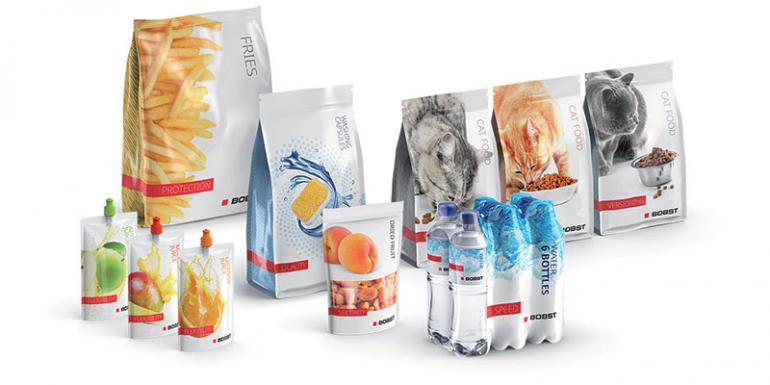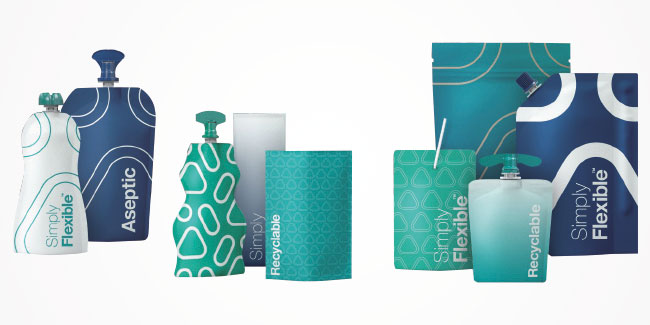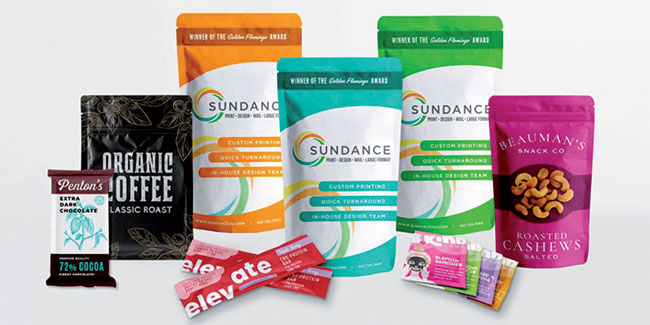Flexible packaging: figures and market

Constantly evolving, modern, usable in many types of packaging thanks to its inherent versatility, flexible converter packaging shows itself capable of adapting to the ever-changing needs of a society where change travels fast. Adaptability therefore becomes fundamental to remain competitive.
Barbara Iascone
Istituto Italiano Imballaggio
Flexible converter packaging can be distinguished according to the prevailing material: 73% is represented by predominantly plastic flexible packaging, 25% by paper, the remaining 2% is accounted for by predominantly aluminium packaging.
Worldwide, the market for flexible converter packaging grew by +3.5% in 2019. In Europe, growth was +1.9%, bringing turnover to over 14,700 million euros.

The market in Italy
The data shared in this analysis refers to the production of flexible packaging obtained by laminating films of different materials: plastics, aluminium, cellulosic and, more recently, also biodegradable/compostable films. The Italian market also showed an increase both in turnover (+3%) and in production, marking a similar growth in terms of tons.
The number of people employed in 2019 also increased by 1.8% compared to 2018.
Compared to the entire national packaging production, flexible converter packaging accounts for 2% in terms of tons, but 8% in terms of turnover: a turnover that, in 2019, exceeded 2,200 million euros with a production of 403 t/000.
55% of production, quantifiable in 222 t/000, was exported, reaching a growth rate compared to 2018 of +3.3%. Imports are very few and tend to be constant. Apparent consumption grew by +2.8% (table 1).
| 2016 | 2017 | 2018 | 2019 | |
|---|---|---|---|---|
| Turnover millions of euros | 2,091 | 2,132 | 2,184 | 2,250 |
| Companies operating in Italy | - | - | - | 80 |
| Approx. workforce | 6,660 | 6,800 | 6,991 | 7,115 |
| Production t/000 | 373 | 382 | 391 | 403 |
| Exports t/000 | 205 | 210 | 215 | 222 |
| Imports t/000 | 3 | 3 | 3 | 3 |
| Apparent usage | 171 | 175 | 179 | 184 |
Source: Italian Packaging Institute elaborations on Giflex data
This type of packaging registers excellent long-term trend performances: as far as production expressed in tons is concerned, over the last 10 years, it has registered an average annual growth rate of +3.9%.
Even in economically complicated periods, when the packaging sector has fallen by -12%, flexible converter packaging has held its own, containing losses at a lower rate of -3%, losses quickly recovered in subsequent years. (table 2)
| 2007 | 2008 | 2009 | 2010 | 2011 | 2012 | 2013 | 2014 | 2015 | 2016 | 2017 | 2018 | 2019 | |
|---|---|---|---|---|---|---|---|---|---|---|---|---|---|
| FC | 100 | 99 | 95.7 | 101.3 | 108 | 108 | 112.3 | 116.7 | 121.7 | 124.3 | 127.3 | 130.3 | 134.3 |
| TOT. PACK. | 100 | 96.9 | 85.9 | 90.5 | 90 | 85.5 | 85.2 | 88.6 | 90.7 | 93.6 | 96.7 | 98.5 | 100.6 |
Areas of application
What makes this type of packaging so high performing is certainly its ability to adapt to emerging needs in terms of product packaging, especially food packaging: the food sector absorbs 93%.
In the food sector, the area of greatest use is undoubtedly convenience fruit and vegetables: in constant growth, in 2019 it accounted for 27.6%.
In second place among the areas of use are bakery products and pasta, with an 18.9% share.
Then there are cheeses, which account for 15.8% of the sector, down from 2018 due to the negative trend registered by the sector.

Uses in the food sector are however numerous: 14.9% featured by the “other” listing includes, for example, ready meals (up compared to 2018), but also sauces, candies, baby food, yoghurt, honey, jams, and beverages (mainly juices). Precisely in relation to the latter listing, it can be seen that the use of flexible packaging is slightly affecting the positioning of small format briks.
Continuing the list of sectors of use, we find the processed meat area, i.e. cured meats (5.3% of the entire sector, slightly down compared to 2018); frozen foods follow at a short distance with 4.9%.
The breakdown in the food sector ends with coffee (3.8%) and pet food (2.5% slightly down).
The non-food part is represented almost exclusively by the cosmetics, pharmaceuticals and household detergents sectors, which account for 6% of the market. In cosmetics, single-dose formats are seen to be particularly developed, while in household detergents, bottle refills show pride of place (table 3).
| 2018 | 2019 | |
|---|---|---|
| Bakery products and pasta | 18.70% | 18.90% |
| Cheese | 16.90% | 15.80% |
| Processed meats (cold-cut, cured meats) | 5.40% | 5.30% |
| Frozen foods | 4.80% | 4.90% |
| Convenience products | 27.00% | 27.60% |
| Coffee | 3.60% | 3.80% |
| Petfood | 2.60% | 2.50% |
| Other foodstuffs | 14.70% | 14.90% |
| Total food | 93.70% | 93.70% |
| Pharmaceutical | 3.00% | 3.00% |
| Domestic detergents | 3.30% | 3.30% |
| Other non foods | 6.30% | 6.30% |
| Total | 100% | 100% |
Source: Italian Packaging Institute Database
Raw materials for the production of converter flexible packaging
In 2019 there was a 1% increase in the use of paper in the production of flexible converter packaging, at the expense of the use of aluminium, which fell by 1%. There was also an increase in the use of plastic polymers, on average +0.8%.
The use of biodegradable/compostable materials continues to grow by combining paper + biodegradable/compostable plastic or plastic + plastic, in both cases biodegradable/compostable.
These are laminated products designed and developed following the demand for packaging with low environmental impact. This type of lamination is used, for example, in the production of pouches for the packaging of pasta and biscuits.
Analysing the figures of the Data Bank edited by the Italian Packaging Institute, with reference to the above mentioned categories, it can be seen that, in 2019, out of about 61,000 tons of flexible converter packaging used in these types of packaging, about 18% were made through the coupling of biodegradable/compostable materials (+2% compared to 2018).

Challenges for the future
Environmental sustainability remains the great challenge of the flexible packaging sector. At the moment, the efforts of operators are moving in two directions: on the one hand, the use of biodegradable/compostable materials, on the other hand, the design of recyclable solutions, in order to bring flexible packaging towards a circular economy, obviously keeping all its functions intact.




















